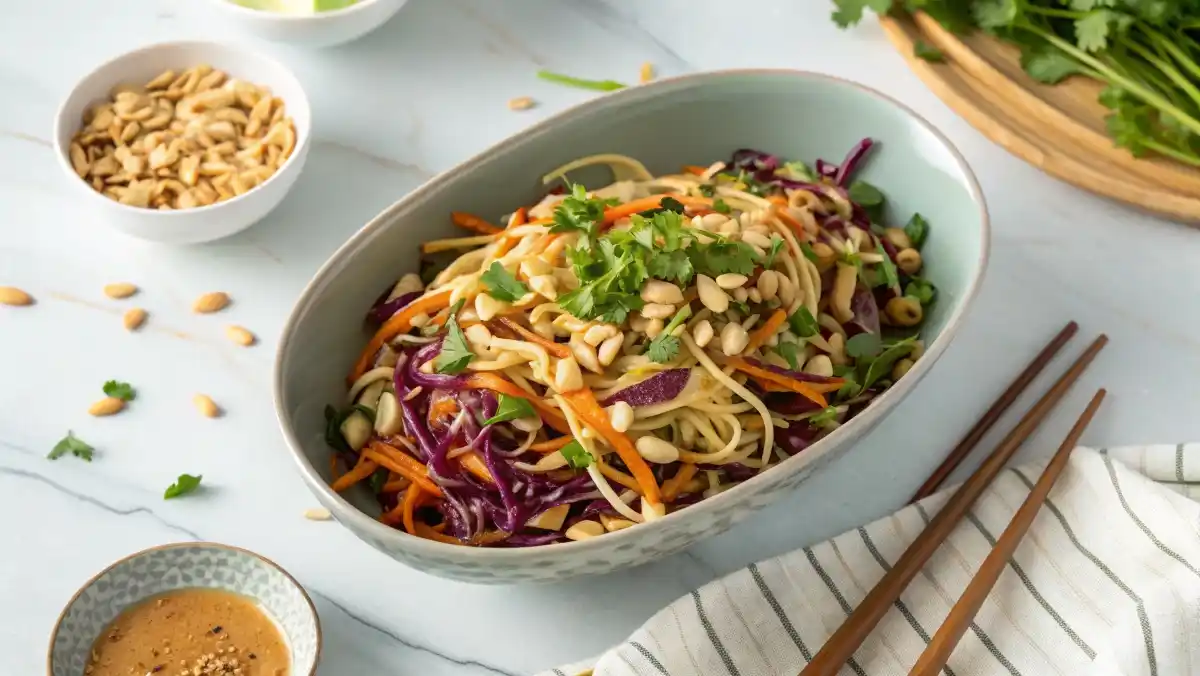Have you ever looked at a packet of ramen noodles and thought, “There has to be more to this?” That moment changed my life—and it might just change yours too. Hi, I’m Amber Wilson, founder of GlowUpKitchen.com, and my journey to food transformation began in the most unlikely place: the break room of a high-rise corporate office in downtown Chicago. Five years ago, my life looked “perfect” on paper. Marketing director at 29, corner office with a view of Lake Michigan, and a salary that made my college friends whistle. I had the designer wardrobe, the downtown apartment, and the perpetually full calendar that proved I was “making it.” What I didn’t have? Time to breathe. Joy in my days. Or a meal that wasn’t eaten hunched over my keyboard or grabbed from a drive-thru window. My grandmother—an incredible Southern cook who could make even plain cornbread taste like heaven—would have been horrified. “Food isn’t fuel, Amber,” she used to say while stirring her famous gumbo. “It’s love made visible.” But love takes time, and time was the one thing I couldn’t afford. Until my body made the decision for me. As I discovered, the connection between our diet and our mental well-being isn’t just a feeling; it’s a concept that experts at Harvard Health have been exploring for years.
This Thai pasta salad isn’t just a recipe; it’s a testament to finding joy and flavor in simplicity, a vibrant escape from the mundane, and a dish that promises to infuse your week with color, crunch, and an irresistible zest for life. It’s a perfect blend of fresh ingredients and bold, zesty flavors that will transport your taste buds to a sun-drenched beach, even on the busiest of weekdays. Forget bland, heavy meals; this is a light, refreshing, and incredibly satisfying dish that proves healthy eating can be an absolute delight. Get ready to discover a new favorite that’s as easy to make as it is delicious.
Why This Recipe Is Part of Your Story
This Thai pasta salad holds a special place in my heart because it embodies everything I learned on my journey from corporate burnout to kitchen magic. It’s a dish that proves you don’t need hours in the kitchen or exotic ingredients to create something truly spectacular and nourishing.
- Effortless Elegance: This recipe is incredibly simple to assemble, making it perfect for those busy weeknights when you crave something wholesome and delicious but are short on time. It’s a testament to how quick, healthy meals can be a cornerstone of a balanced life.
- A Symphony of Textures and Flavors: Every bite is an adventure! The crisp vegetables, tender pasta, and creamy, tangy dressing create a harmonious blend that keeps you coming back for more. It’s a refreshing change from traditional pasta salads, offering a unique flavor profile that excites the palate.
- Nourishment for Body and Soul: Packed with fresh vegetables and customizable with your favorite protein, this salad is a powerhouse of nutrients. It’s a meal that truly makes you feel good, providing sustained energy without the post-meal slump. It’s a fantastic protein pasta salad option if you add chicken or tofu.
- The Taste of Freedom: For me, this salad represents the freedom I found in the kitchen – the freedom to create, to nourish myself, and to enjoy food without guilt or stress. It’s a reminder that even simple dishes can bring immense joy and a sense of accomplishment.
Ingredients: The Actors of Our Culinary Scene
Every ingredient in this Thai pasta salad plays a crucial role, contributing to its vibrant flavors and satisfying textures. Opt for the freshest produce you can find; it truly makes a difference.
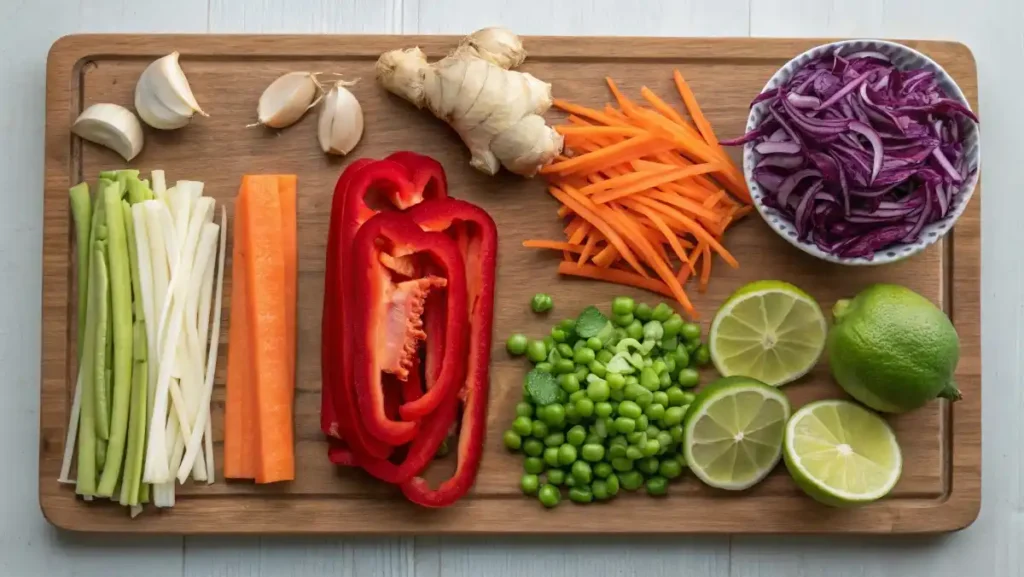
For the Salad:
- 8 oz (225g) short pasta (such as rotini, fusilli, or penne)
- 1 cup (120g) red cabbage, thinly sliced
- 1 cup (120g) carrots, julienned or shredded
- 1 red bell pepper, thinly sliced
- 1/2 cup (60g) shelled edamame (fresh or frozen, thawed)
- 1/2 cup (60g) cucumber, diced
- 1/4 cup (10g) fresh cilantro, chopped
- 2 green onions, thinly sliced (white and green parts)
- 1/4 cup (30g) roasted peanuts or cashews, chopped (for garnish)
For the Creamy Peanut Dressing:

- 1/2 cup (120ml) creamy peanut butter (natural, unsweetened preferred)
- 1/4 cup (60ml) lime juice (from about 2-3 limes), freshly squeezed
- 2 tablespoons (30ml) soy sauce or tamari (for gluten-free)
- 2 tablespoons (30ml) rice vinegar
- 1 tablespoon (15ml) maple syrup or honey (adjust to taste)
- 1 tablespoon (15ml) toasted sesame oil
- 1-2 cloves garlic, minced (about 1 teaspoon)
- 1 teaspoon fresh ginger, grated
- 1/2 teaspoon red pepper flakes (optional, for a kick)
- 2-4 tablespoons (30-60ml) warm water, to thin to desired consistency
Equipment: Our Kitchen Companions
These are the trusty allies that will help you bring this delicious Thai pasta salad to life:
- Large Pot: For cooking the pasta.
- Colander: To drain the pasta.
- Large Mixing Bowl: The stage for combining all our vibrant ingredients.
- Whisk: For creating the perfectly smooth and creamy dressing.
- Measuring Cups and Spoons: Precision is key, even in creative cooking.
- Cutting Board and Sharp Knife: For preparing all those beautiful, fresh vegetables.
- Grater or Julienne Peeler: For the carrots and ginger.
The Path to Perfection: Instructions Step by Step
Follow these steps to create a Thai pasta salad that’s bursting with flavor and freshness.
- Cook the Pasta: Bring a large pot of salted water to a rolling boil. Add the pasta and cook according to package directions until al dente. This is crucial for a good pasta salad – you want the pasta to have a slight bite, not be mushy. Drain the pasta thoroughly and rinse it under cold water until completely cool. This stops the cooking process and prevents the pasta from sticking together. Drain very well again.
- Prepare the Vegetables: While the pasta cooks, prepare all your vegetables. Thinly slice the red cabbage, julienne or shred the carrots, thinly slice the red bell pepper, dice the cucumber, chop the cilantro, and thinly slice the green onions. If using frozen edamame, thaw it according to package instructions. Arrange them beautifully; remember, we eat with our eyes first!
- Make the Peanut Dressing: In a medium bowl, combine the peanut butter, fresh lime juice, soy sauce (or tamari), rice vinegar, maple syrup (or honey), toasted sesame oil, minced garlic, grated ginger, and red pepper flakes (if using). Whisk vigorously until smooth and well combined. The mixture will be quite thick at first. Gradually add warm water, 1 tablespoon at a time, whisking continuously, until the dressing reaches your desired consistency – it should be pourable but still creamy. Taste and adjust seasonings if needed; you might want more lime, sweetness, or a pinch more salt.
- Combine and Toss: In the large mixing bowl, add the cooled, drained pasta, red cabbage, carrots, red bell pepper, edamame, cucumber, cilantro, and most of the green onions (reserve a little for garnish). Pour the creamy peanut dressing over the salad ingredients.

- Gently Toss: Using tongs or a large spoon, gently toss all the ingredients until the pasta and vegetables are evenly coated with the dressing. Be thorough but gentle to avoid breaking the pasta or bruising the vegetables.
- Chill and Serve: For best results, cover the bowl and refrigerate the Thai pasta salad for at least 30 minutes to allow the flavors to meld and deepen. This chilling time is like a quiet meditation for the ingredients, allowing them to truly get to know each other.
- Garnish and Enjoy: Before serving, give the salad another quick toss. Garnish with the reserved green onions and chopped roasted peanuts or cashews for added crunch and visual appeal. Serve chilled or at room temperature.
Secrets to Success: My Master Tips
Achieving the perfect Thai pasta salad isn’t just about following steps; it’s about understanding the nuances that elevate a good dish to a great one. Here are my personal secrets for success:
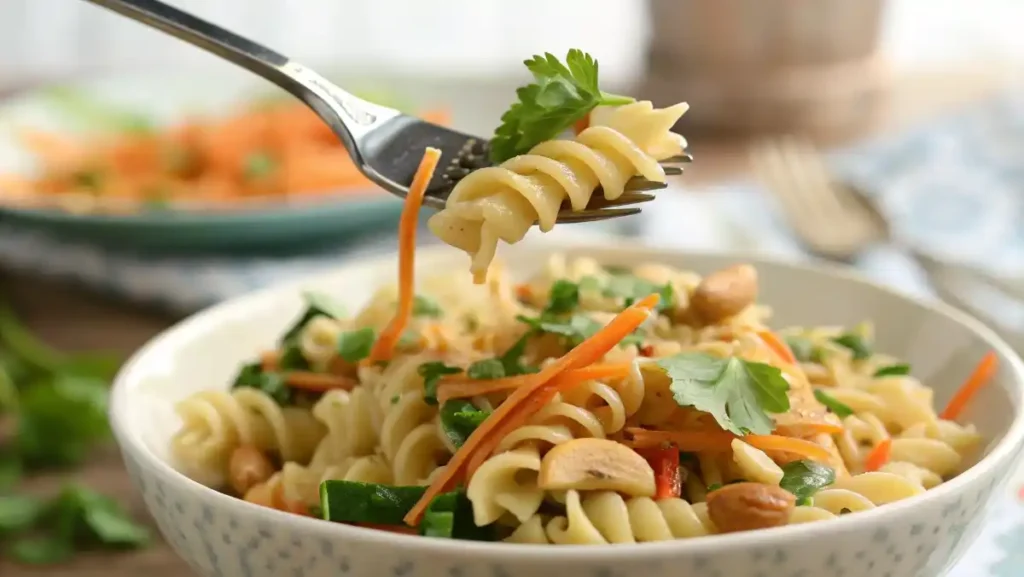
- Al Dente is Key: Overcooked pasta will turn mushy and absorb too much dressing, making your salad heavy. Cook it just until it has a slight bite. Rinsing with cold water immediately after draining is crucial to stop the cooking process and keep the pasta from clumping.
- Freshness Matters: The vibrant flavors of this salad truly shine when you use fresh, crisp vegetables. Don’t skimp on fresh lime juice and ginger; they provide the essential bright notes that define this dish.
- Balance the Dressing: The peanut dressing is the heart of this salad. Taste it as you go! Adjust the sweetness, tanginess, and spice to your preference. A little more lime can brighten it, a touch more maple syrup can balance the savory notes, and extra red pepper flakes will give it a fiery kick.Great Thai cooking is all about achieving a perfect harmony of these elements. To truly master this art, I highly recommend this guide to balancing Thai flavors from Hot Thai Kitchen.
- Chill Time is Your Friend: While you can eat this salad immediately, allowing it to chill for at least 30 minutes (or even a few hours) lets the flavors meld beautifully. The vegetables absorb some of the dressing, and the overall taste becomes more harmonious.
- Don’t Over-Dress Initially: It’s always better to start with a little less dressing and add more if needed. You can always add, but you can’t take away. If you plan to make it ahead, you might want to reserve a little dressing to toss in just before serving, as the pasta can absorb some of it over time.
Variations: The Art of Reinvention
This Thai pasta salad is wonderfully versatile, allowing you to explore new flavors and cater to different preferences. Here are a few ways to reinvent this classic:
- Elote-Inspired Twist: For a vibrant, smoky twist, try an elote pasta salad variation. Replace some of the traditional Thai vegetables with grilled corn kernels (fresh or frozen, charred), cotija cheese, and a sprinkle of chili powder. The dressing can be adapted with a touch of smoked paprika and a dollop of Greek yogurt for a creamy, tangy profile.
- Hearty Grinder Style: Transform this into a robust grinder pasta salad by adding diced salami, provolone cheese, and a medley of pickled vegetables like giardiniera or banana peppers. The dressing can be made with a red wine vinaigrette base, perhaps with a hint of oregano and garlic, for a truly satisfying meal.
- Gluten-Free Goodness: Easily make this a gluten-free pasta salad by using your favorite gluten-free pasta (such as brown rice, corn, or chickpea pasta) and ensuring your soy sauce is replaced with tamari. The rest of the ingredients are naturally gluten-free, making this a simple swap for those with dietary restrictions.
- Protein Powerhouse: Boost the nutritional value and make it a substantial protein pasta salad or high protein pasta salad by adding cooked, shredded chicken, grilled shrimp, pan-fried tofu cubes, or chickpeas. These additions make it a complete meal, perfect for meal prep or a post-workout refuel.
- Green Goddess: Incorporate more leafy greens for a kale pasta salad or spinach pasta salad by finely chopping fresh kale or spinach and tossing it in with the other vegetables. The dressing will help tenderize the greens, adding extra nutrients and a lovely earthy flavor.
Vegan / Vegetarian Options: An Inclusive Cuisine
This Thai pasta salad is naturally vegetarian. To make it fully vegan, simply ensure your peanut butter is free of honey (most are) and use maple syrup instead of honey in the dressing. The rest of the ingredients are plant-based, making this a delicious and inclusive dish for everyone.
Nutritional Information: Science for Well-being
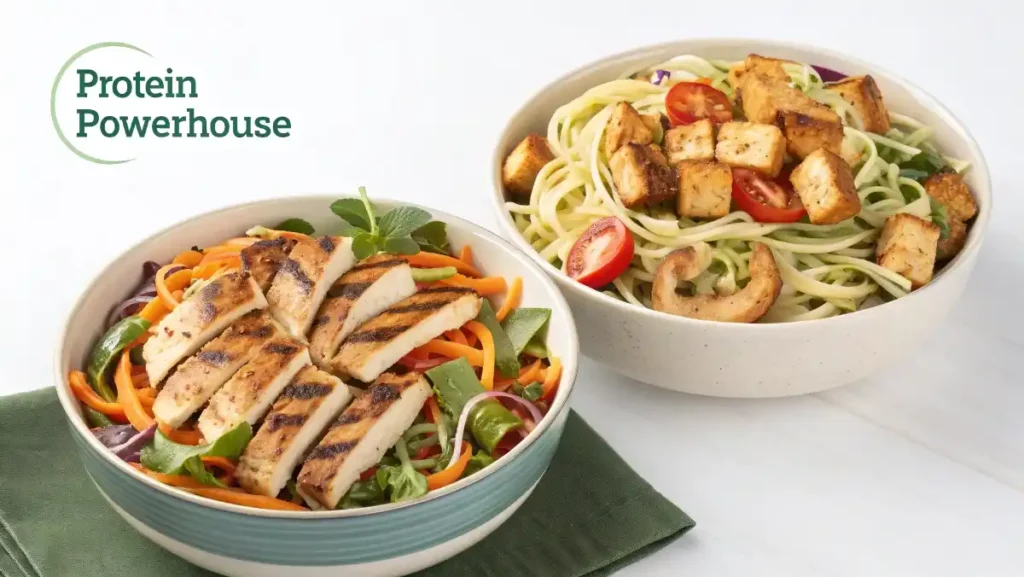
(Please note: This is an estimated nutritional breakdown per serving and can vary based on specific ingredients and portion sizes. It is provided for informational purposes only and should not be considered medical advice.)
Estimated per serving (makes 6 servings):
- Calories: 350-400 kcal
- Protein: 12-15g
- Fat: 18-22g (mostly healthy fats from peanut butter and sesame oil)
- Carbohydrates: 40-45g
- Fiber: 5-7g
Potential Allergens: Peanuts, Soy (if using soy sauce).
Blood Sugar Considerations: A Conscious Approach
For those mindful of blood sugar levels, this Thai pasta salad offers a relatively balanced profile, especially when compared to traditional, carb-heavy pasta dishes. The fiber from the vegetables and the healthy fats and protein from the peanut dressing help to slow down glucose absorption.
Adaptations for Lower Glycemic Impact:
- Choose Your Pasta Wisely: Opt for whole wheat pasta, chickpea pasta, or lentil pasta, which have a lower glycemic index than white pasta. These options also provide more fiber and protein.
- Increase Veggies, Decrease Pasta: You can adjust the pasta-to-vegetable ratio, using less pasta and more of the crisp, non-starchy vegetables to further reduce the carbohydrate load.
- Mind the Sweetener: While maple syrup is used in a small amount, you can reduce it or use a sugar substitute if preferred.
Serving Suggestions: The Art of Presentation
This Thai pasta salad is a star on its own, but it also pairs beautifully with a variety of accompaniments, transforming a simple meal into a delightful spread.
- As a Light Main: Serve a generous portion as a refreshing and satisfying main course for lunch or a light dinner.
- With Grilled Protein: It makes an excellent side dish for grilled chicken, shrimp, salmon, or tofu. The smoky flavors from the grill complement the vibrant salad perfectly.
- Lettuce Wraps: For a fun, interactive meal, serve the salad with large lettuce leaves (like butter lettuce or romaine) for DIY lettuce wraps.
- Spring Rolls: Offer a side of fresh spring rolls with a light dipping sauce to complete the Asian-inspired theme.
- Garnish with Fresh Herbs: A sprinkle of extra cilantro, mint, or basil just before serving enhances the freshness and visual appeal.
Storage: Extending the Pleasure
One of the best things about this Thai pasta salad is how well it keeps, making it perfect for meal prep!
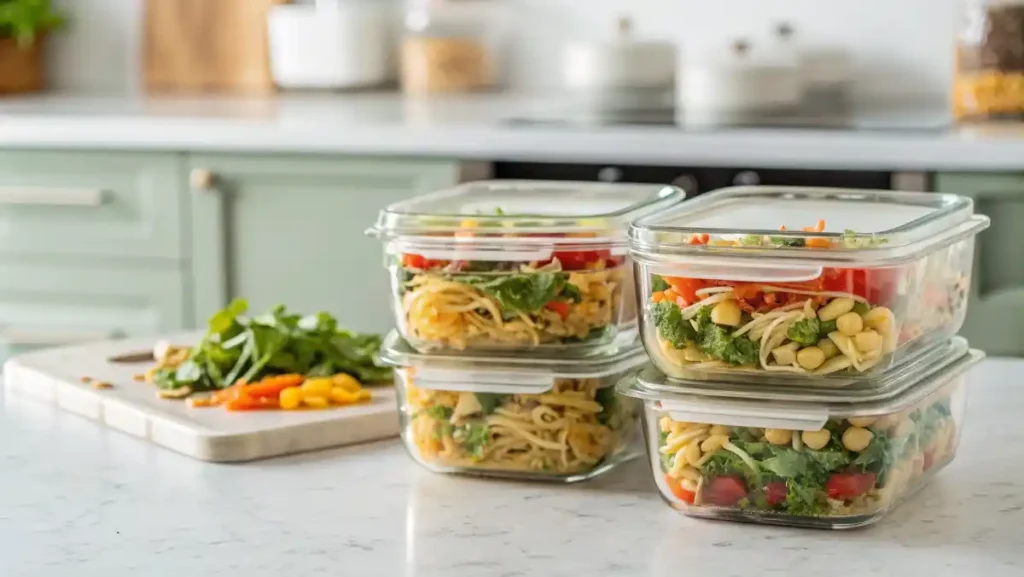
- Refrigeration: Store leftover salad in an airtight container in the refrigerator for up to 3-4 days. The flavors often deepen and improve overnight.
- Longevity of Flavors: The dressing will continue to meld with the ingredients, and the vegetables will retain their crunch for several days.
- Reheating: This salad is best served chilled or at room temperature. Reheating is not recommended as it can make the pasta mushy and dull the fresh flavors of the vegetables. If the salad seems a little dry after a day or two, you can whisk in a tablespoon or two of warm water or a little extra lime juice into the remaining dressing (if you reserved some) or directly into the salad to refresh it.
Frequently Asked Questions (FAQ):
Your Answers, Our Stories
Here are some common questions about making and enjoying this vibrant Thai pasta salad:
Can I make this Thai pasta salad ahead of time?
Absolutely! This salad is fantastic for meal prep. You can prepare it up to 24 hours in advance. In fact, the flavors often deepen and meld beautifully after a few hours or overnight in the refrigerator. If making it more than a day ahead, you might want to keep the dressing separate and toss it in just before serving to maintain the freshest texture of the vegetables.
What kind of pasta is best for this salad?
Short pasta shapes like rotini, fusilli, penne, or farfalle (bow-tie pasta) work wonderfully as they hold the dressing well and are easy to eat. You can also use gluten-free pasta options like chickpea or brown rice pasta for a healthier twist.
How can I make this salad spicier?
To increase the heat, you can add more red pepper flakes to the dressing. For an even bolder kick, consider adding a small amount of sriracha or a finely minced Thai chili to the dressing. Start with a little and add more to taste!
Can I add protein to make it a complete meal?
Yes, this is an excellent way to make it a more substantial protein pasta salad! Cooked and shredded chicken, grilled shrimp, pan-fried tofu, or even chickpeas are fantastic additions. Add them when you combine the pasta and vegetables with the dressing.
What if I don’t have all the vegetables listed?
No problem! This recipe is very flexible. Feel free to substitute or add other crisp vegetables you have on hand, such as shredded cabbage, snap peas, thinly sliced radishes, or even blanched broccoli florets. The goal is a colorful, crunchy mix!
Conclusion: The Epilogue of Our Culinary Adventure
This Thai pasta salad is more than just a dish; it’s a vibrant reminder that delicious, nourishing food doesn’t have to be complicated or time-consuming. It’s a testament to the power of fresh ingredients, bold flavors, and the simple joy of creating something beautiful in your own kitchen. For me, it represents the shift from a life of hurried, uninspired meals to one where every bite is a celebration of flavor and well-being. It’s a dish that brings a burst of sunshine and exotic flair to any table, proving that even amidst the busiest schedules, you can find moments of culinary bliss.
So, go ahead, embrace the colors, savor the crunch, and let this Thai pasta salad transport you to a place of culinary calm and vibrant delight. It’s time to transform your mealtimes into an experience, one delicious bite at a time. Launch yourself into this culinary adventure this weekend and share with us the smiles it created in your home! Don’t forget to share your creations on Instagram with #GlowUpKitchen and tag us!
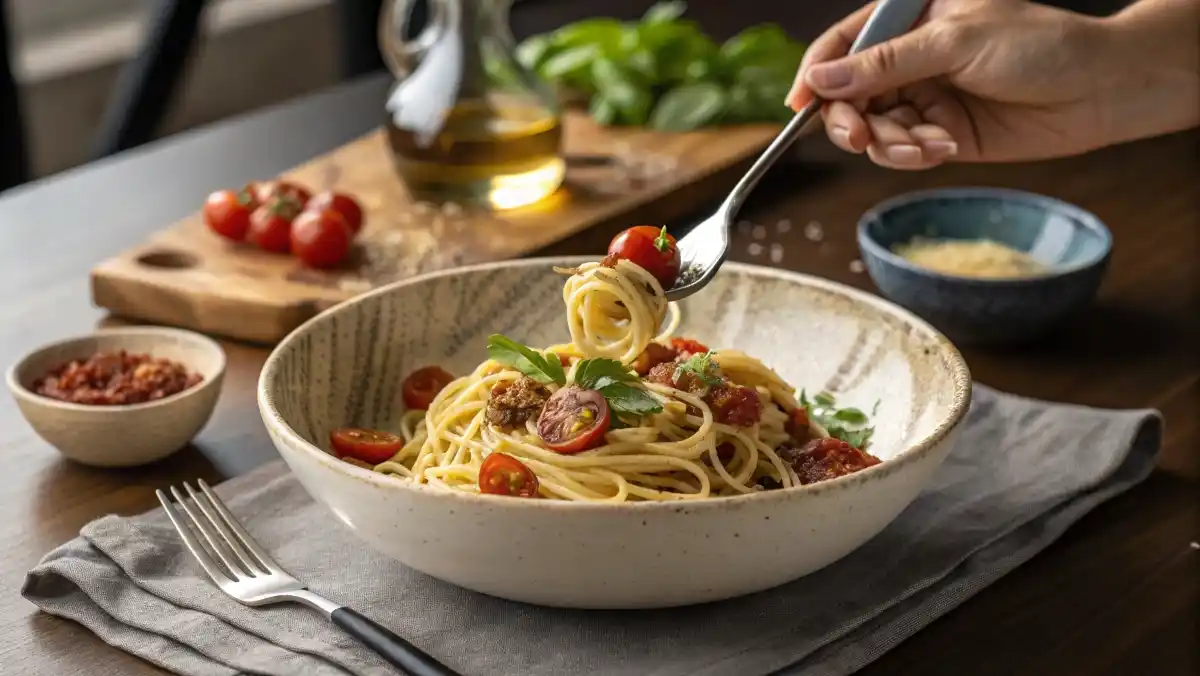
Thai Pasta Salad with Creamy Peanut Dressing
Ingredients
Equipment
Method
- Bring a large pot of salted water to a rolling boil. Add the pasta and cook according to package directions until al dente. Drain the pasta thoroughly and rinse it under cold water until completely cool. Drain very well again.
- While the pasta cooks, prepare all your vegetables. Thinly slice the red cabbage, julienne or shred the carrots, thinly slice the red bell pepper, dice the cucumber, chop the cilantro, and thinly slice the green onions. If using frozen edamame, thaw it according to package instructions.
- In a medium bowl, combine the peanut butter, fresh lime juice, soy sauce (or tamari), rice vinegar, maple syrup (or honey), toasted sesame oil, minced garlic, grated ginger, and red pepper flakes (if using). Whisk vigorously until smooth and well combined. Gradually add warm water, 1 tablespoon at a time, whisking continuously, until the dressing reaches your desired consistency.
- In the large mixing bowl, add the cooled, drained pasta, red cabbage, carrots, red bell pepper, edamame, cucumber, cilantro, and most of the green onions (reserve a little for garnish). Pour the creamy peanut dressing over the salad ingredients.
- Using tongs or a large spoon, gently toss all the ingredients until the pasta and vegetables are evenly coated with the dressing.
- Cover the bowl and refrigerate the Thai pasta salad for at least 30 minutes to allow the flavors to meld and deepen.
- Before serving, give the salad another quick toss. Garnish with the reserved green onions and chopped roasted peanuts or cashews. Serve chilled or at room temperature.
